Chances are that unless you’re into competition, practical or performance shooting, and/or really into the Walther PDP, you’ve never heard of Indiana-based ZR Tactical. ZR Tactical is an American small business, FFL, and machine shop that offers a multitude of parts and accessories for several popular handgun makes and models. These days, they’re probably best known for their guide rods and recoil-spring assemblies meant for the entirety of the Walther PDP family (F-Series, Standard, and Steel models).
Since mid-August 2024, I’ve been shooting two of my 5-inch Walther PDPs with ZR Tactical’s guide rods. Thus far, I have at least five matches under my belt with either pistol and several private personal training sessions. In the case of the PDP Match Steel Frame, I shot all of Day 2 of Greybeard Actual’s Pistol Skill Development intensive handgun-shooting course. Since replacing the OEM RSAs on my pistol, I’ve shot different types of 9mm ammo, both factory and hand loads.
I’ve now reached a point where I’m comfortable writing about ZR Tactical’s offerings.
ZR Tactical And Its Guide Rods
Keeping in mind that Walther PDP originally launched barely three years ago and is still fairly new, ZR Tactical has become fairly synonymous with the PDP. The company was one of the first outfits to become known for its Walther PDP aftermarket parts selection, with guide rods likely being their best-selling products.
ZR Tactical sells traditional (non-captured) guide rods, captured RSAs, and their specialty Long Stroke RSAs in addition to springs of different poundage. RSAs and guide rods matter because their primary purpose is to modulate the manner in which a pistol’s slide cycles and behaves during strings of fire.
My full-size steel-frame PDP, my principal USPSA Carry Optics gun, currently has the 14-lb Long Stroke Guide Rod. It is specifically engineered to run with the 5-inch full-size steel frame models. The other PDP, my original full-size 5-inch polymer model (also for Carry Optics), currently cycles rounds with the ZR Tactical 15-lb Ultra Mass Guide Rod.
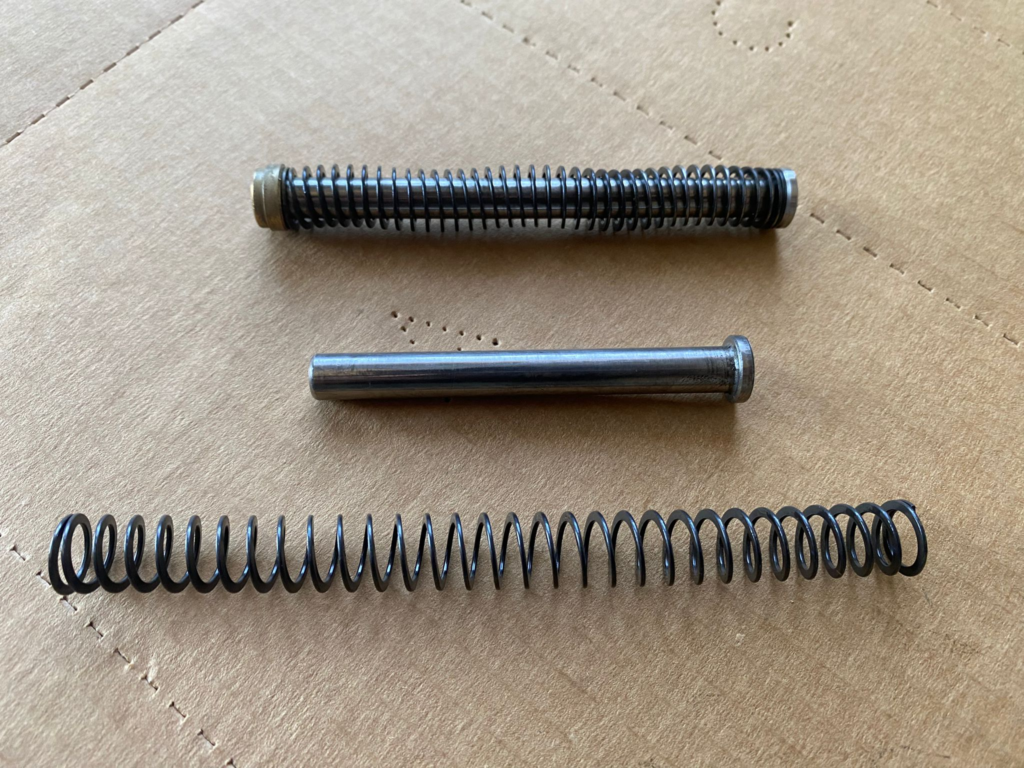
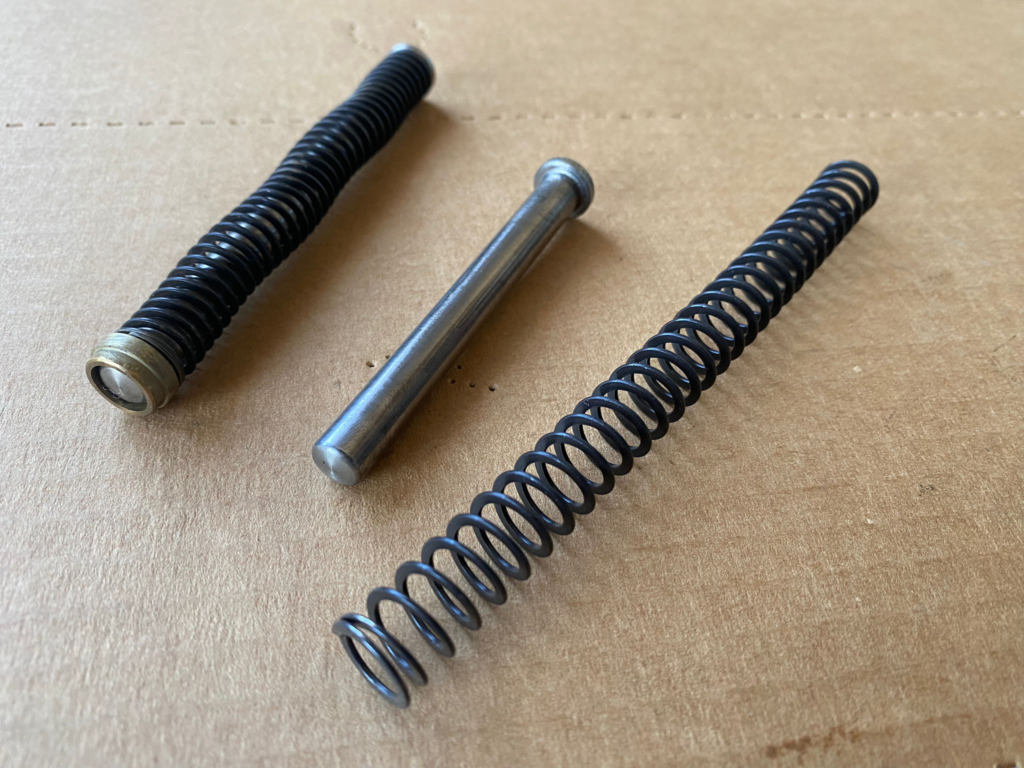
Long Stroke Guide Rod
ZR Tactical’s Long Stroke Guide Rod is probably their magnum opus. These captured RSAs are specifically-sized for either 5-inch or 4.5-inch slides and come with a lighter 14-pound spring. Installation involves the removal of the PDP’s polymer retainer—the small part that clips directly underneath the slide on 4.5 and 5-inch guns to hold the factory RSA in place. It’s not too difficult to remove this piece, and once it’s gone, the Long Stroke Guide Rod drops into place like normal.
I only have experience with the ZR Tactical Long Stroke Guide Rod for the full-size 5-inch steel-frame PDP. Long Stroke Guide Rods specifically do two things with the intention of making the pistol’s recoil impulse as soft-shooting as possible.
First, they replace the factory RSA with a lighter weight spring that affects how the slide reciprocates as with any other pistol. Second, and more importantly, by virtue of their physically longer design, the PDP slide is able to ride further rearward, which also softens the recoil impulse. It’s less snappy (for lack of a better term).
Think of a modern polymer-framed micro 9mm, like the P365, the Taurus GX4, the M&P Shield, or the new HK CC9. Among other things, these ultra-compacts feel snappier with 9mm because their slides only have a short distance to move back, making slides stop abruptly before rebounding home.
This phenomenon isn’t limited only to micro 9mms. It happens to all semi-automatics regardless of size. It’s just more pronounced on modern Browning delayed blowback pistols with tilting barrels.
The extra length built into the ZR Tactical Long Stroke Guide Rod provides a longer track for the slide to move smoothly. Likewise, it comes to a less abrupt stop before rebounding home. This is aided further by the lighter 14-pound spring, especially with 9mm loads.
Running the Long Stroke Guide Rod
Opinions on recoil are subjective. However, I can best describe my steel-frame Walther’s recoil impulse with the Long Stroke Guide Rod as feeling more like a Beretta 92 with its “easier to unlock” locking block.
The 14-pound captured spring included with this aftermarket RSA works best with anything softer shooting than CCI Blazer 115, such as 147-grain ammo loaded to the low 900 FPS velocity range to make USPSA/IPSC minor power factor. This RSA will certainly run higher-velocity loads, but I’d argue that the competitive edge and nuance that the ZR RSA provides are diminished.
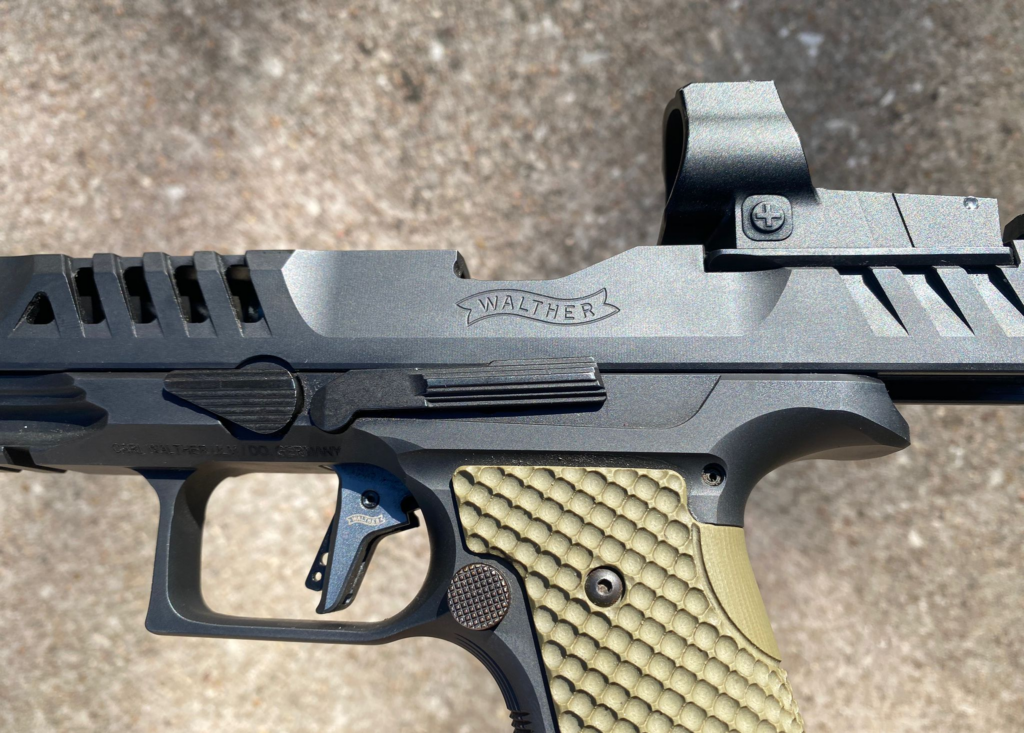
With nearly 1000 rounds in with various types of ammo, the unit has been wholly reliable. The HOP Munitions 147-grain poly-coated RN load that I’ve been shooting through several pistols this year works like a dream with the ZR Tactical Long Stroke Guide Rod. Scott Jedlinski uses this cartridge and RSA in his steel-frame Walther, too (I asked him).
In addition to those factory-loaded 147-grain competition rounds, I’ve also enjoyed shooting this Walther with a 124 bullet over 4.2 grains of TiteGroup, a recipe recommended to me by USPSA GM “Les Pepperoni.”
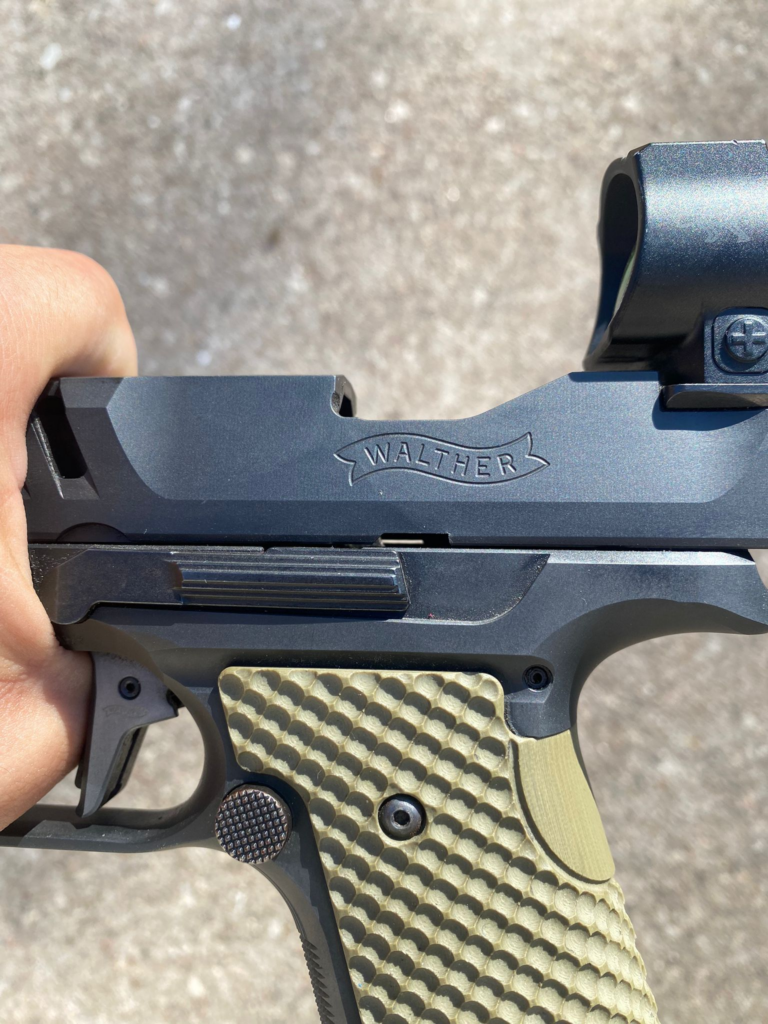
Ultra Mass Guide Rod
The ZR Tactical Ultra Mass Guide Rod doesn’t involve removing the polymer RSA retainer on 4.5 or 5-inch Walthers. It’s a drop-in part, and its corresponding recoil spring isn’t captured. So, it does require a bit more finesse when installing it. The Ultra Mass Guide Rod I’m shooting with came with a 15-pound spring. As I mentioned above, this weight is better for “lighter” sporting 9mm loads; it’s fantastic with the HOP Munitions cartridge.
The guide rod itself is machined from stainless steel bar stock and increases the weight over the standard Walther PDP polymer RSA. Besides being a direct drop-in part, ZR Tactical also offers companion springs in different weights, making it possible for end users to tune their guns.
Running the Ultra Mass Guide Rod
I installed my Ultra Mass Guide Rod on both my full-size standard 5-inch polymer PDP and the PDP ACRO Professional. These ZR Parts presented zero reliability issues in either pistol, but I settled on leaving it on the larger 5-inch Walther because it just “felt” better. I think the PDP ACRO Professional model would fare better with the slightly heavier 17-lb spring due to its shorter slide, but that’s just my hunch.
After shooting a few matches and at least one practice session with the Ultra Mass Guide Rod and the full-size 5-inch standard PDP, I noticed that the sweet spot was very similar to that of the Long Stroke Guide Rod and the other Walther. The slide tracked better, and the gun felt more responsive with lighter sporting loads (Blazer 115 or milder).
Keep in mind that duty ammo also requires stiffer springs, as a rule of thumb, which is why the PDP factory RSA is sprung at 18 pounds.

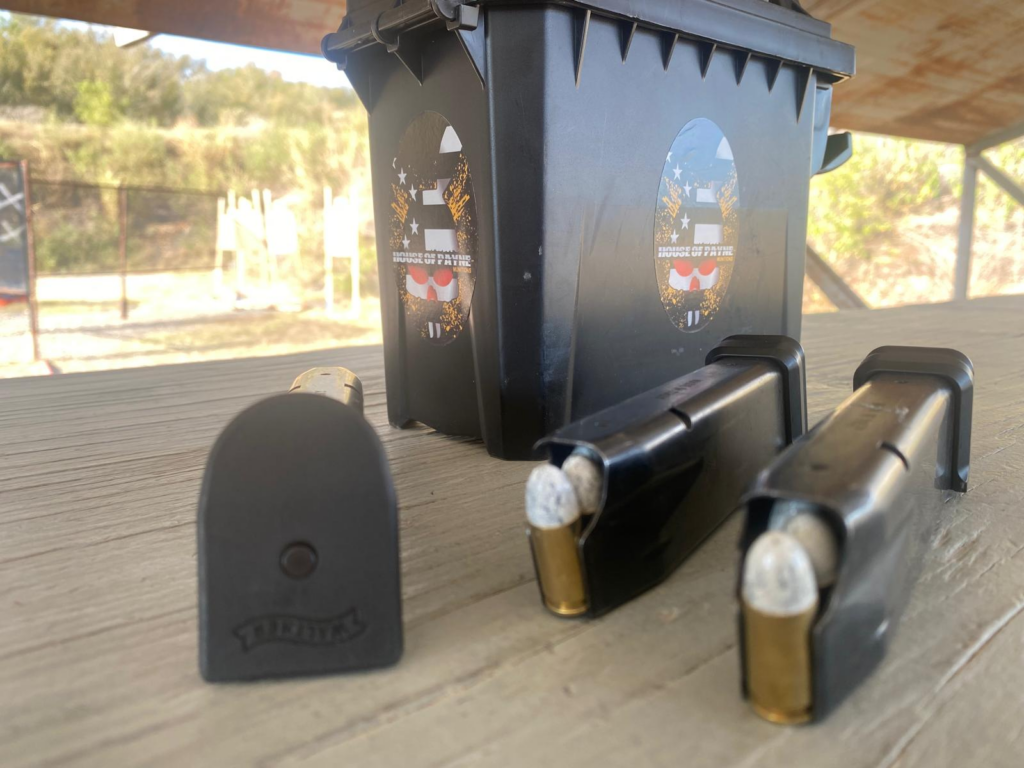
The Takeaway
One of the key differences between a high-level pistol shooter and an amateur is the rate at which they process information. Likewise, the relationship between the gun’s cycling rhythm, the shooter, and their internal SHOOT/NO-SHOOT mechanism comes into play. This is why shooters at the highest levels spend so much time and effort tuning their pistols and adjusting their tailored handloads to their chosen pistol and shooting style. Their system, in other words.
The timing for this write-up couldn’t have been better. I am now at the point where I’m shooting enough to notice the difference in recoil spring weights. So, the art of tuning a pistol is making sense intuitively. I can finally appreciate the relationship between the gun, a specific load, and its guide-rod and spring combination on a more nuanced level.
The fact that we have access to high-quality aftermarket Walther parts from companies like ZR Tactical is a boon to Walther’s 9mm flagship.
Read the full article here








